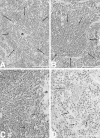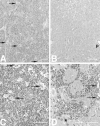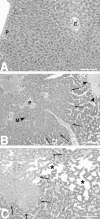Hepatocellular hyperplasia, plasmacytoma formation, and extramedullary hematopoiesis in interleukin (IL)-6/soluble IL-6 receptor double-transgenic mice
- PMID: 9708822
- PMCID: PMC1852966
- DOI: 10.1016/S0002-9440(10)65605-2
Hepatocellular hyperplasia, plasmacytoma formation, and extramedullary hematopoiesis in interleukin (IL)-6/soluble IL-6 receptor double-transgenic mice
Abstract
Cytokines interact not only with membrane anchored receptors, but also with specific soluble receptors which circulate in the bloodstream. In general, soluble cytokine receptors such as soluble tumor necrosis factor receptor, soluble interleukin 1 receptor, and soluble interleukin 4 receptor compete with their membrane-bound counterparts for the ligands and therefore act as antagonists. In contrast, soluble receptors for cytokines of the interleukin-6 (IL-6) family complex with their ligands act agonistically. Interestingly, the complex of IL-6 and the soluble interleukin 6 receptor (sIL-6R) activates target cells that do not express the membrane-bound IL-6R and therefore cannot respond to IL-6. To identify cellular responses that are due to IL-6/sIL-6R but not to IL-6 alone, IL-6/sIL-6R double-transgenic mice were generated and compared with IL-6 single-transgenic mice. IL-6/sIL-6R transgenic mice develop a severe phenotype showing 1) marked hepatocellular hyperplasia frequently surrounded by peliosis and necrosis, 2) significant acceleration and aggravation of plasmacytoma formation, and 3) excessive activation of extramedullary hematopoiesis in spleen and liver followed by a subsequent increase of all cellular components in the peripheral blood. These in vivo data suggest that the sIL-6R recruits primarily unresponsive cell populations such as hematopoietic progenitor cells and hepatocytes to IL-6-induced proliferation, but also enhances the known mitogenic effect of IL-6 on plasma cells and thereby contributes to plasmacytoma formation.
Figures







Similar articles
-
Coexpression of IL-6 and soluble IL-6R causes nodular regenerative hyperplasia and adenomas of the liver.EMBO J. 1998 Oct 1;17(19):5588-97. doi: 10.1093/emboj/17.19.5588. EMBO J. 1998. PMID: 9755159 Free PMC article.
-
Interleukin-6 and the soluble interleukin-6 receptor induce stem cell factor and Flt-3L expression in vivo and in vitro.Exp Hematol. 2001 Feb;29(2):146-55. doi: 10.1016/s0301-472x(00)00650-0. Exp Hematol. 2001. PMID: 11166453
-
Extramedullary expansion of hematopoietic progenitor cells in interleukin (IL)-6-sIL-6R double transgenic mice.J Exp Med. 1997 Feb 17;185(4):755-66. doi: 10.1084/jem.185.4.755. J Exp Med. 1997. PMID: 9034153 Free PMC article.
-
Interleukin-6 biology is coordinated by membrane-bound and soluble receptors: role in inflammation and cancer.J Leukoc Biol. 2006 Aug;80(2):227-36. doi: 10.1189/jlb.1105674. Epub 2006 May 17. J Leukoc Biol. 2006. PMID: 16707558 Review.
-
The role of transsignalling via the agonistic soluble IL-6 receptor in human diseases.Biochim Biophys Acta. 2002 Nov 11;1592(3):323-43. doi: 10.1016/s0167-4889(02)00325-7. Biochim Biophys Acta. 2002. PMID: 12421676 Review.
Cited by
-
Socs3 maintains the specificity of biological responses to cytokine signals during granulocyte and macrophage differentiation.Exp Hematol. 2008 Jul;36(7):786-98. doi: 10.1016/j.exphem.2008.02.008. Epub 2008 Apr 8. Exp Hematol. 2008. PMID: 18400361 Free PMC article.
-
Coexpression of IL-6 and soluble IL-6R causes nodular regenerative hyperplasia and adenomas of the liver.EMBO J. 1998 Oct 1;17(19):5588-97. doi: 10.1093/emboj/17.19.5588. EMBO J. 1998. PMID: 9755159 Free PMC article.
-
Response: Transient liver modifications associated with abdominal sepsis are various and underestimated.Eur Radiol. 2016 Dec;26(12):4327-4328. doi: 10.1007/s00330-016-4294-6. Epub 2016 Mar 23. Eur Radiol. 2016. PMID: 27007863 No abstract available.
-
Liver stem cells and tgf-Beta in hepatic carcinogenesis.Gastrointest Cancer Res. 2008 Jul;2(4 Suppl):S27-30. Gastrointest Cancer Res. 2008. PMID: 19343145 Free PMC article.
-
Remethylation of Dnmt3a-/- hematopoietic cells is associated with partial correction of gene dysregulation and reduced myeloid skewing.Proc Natl Acad Sci U S A. 2020 Feb 11;117(6):3123-3134. doi: 10.1073/pnas.1918611117. Epub 2020 Jan 29. Proc Natl Acad Sci U S A. 2020. PMID: 31996479 Free PMC article.
References
-
- Akira S, Taga T, Kishimoto T: Interleukin-6 in biology and medicine. Adv Immunol 1993, 54:1-78 - PubMed
-
- Bauer J, Herrmann F: Interleukin-6 in clinical medicine. Ann Hematol 1991, 62:203-210 - PubMed
-
- Gauldie J, Richards C, Harnish D, Lansdorp P, Baumann H: Interferon beta 2/B-cell stimulatory factor type 2 shares identity with monocyte-derived hepatocyte-stimulating factor and regulates the major acute phase protein response in liver cells. Proc Natl Acad Sci USA 1987, 84:7251-7255 - PMC - PubMed
-
- Grötzinger J, Kurapkat G, Wollmer A, Kalai M, Rose-John S: The family of the IL-6-type cytokines: specificity and promiscuity of the receptor complexes. Proteins Struct Funct Genet 1997, 27:96-109 - PubMed
-
- Hibi M, Nakajima K, Hirano T: IL-6 cytokine family and signal transduction: a model of the cytokine system. J Mol Med 1996, 74:1-12 - PubMed
Publication types
MeSH terms
Substances
LinkOut - more resources
Full Text Sources
Other Literature Sources
Medical
Molecular Biology Databases
Research Materials

